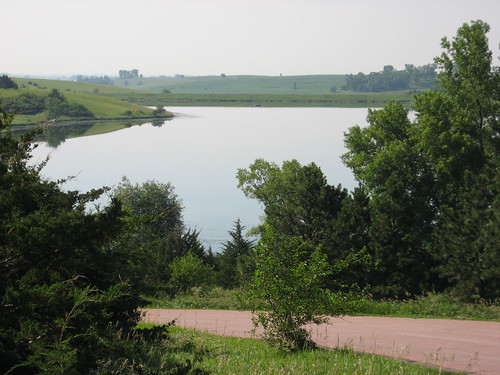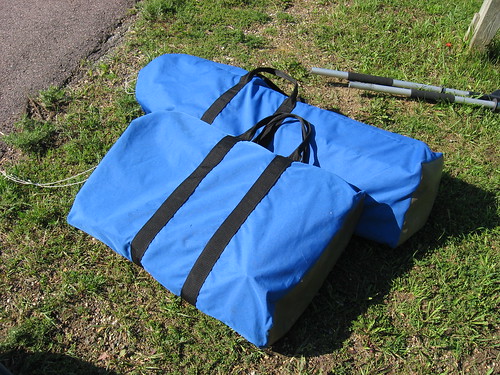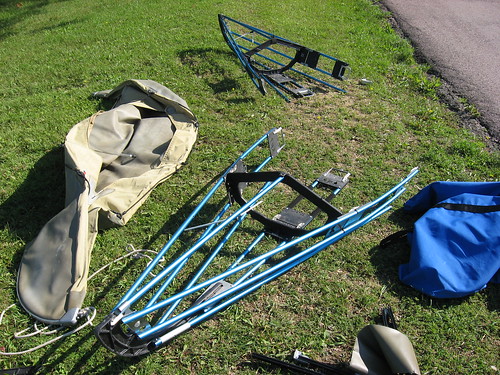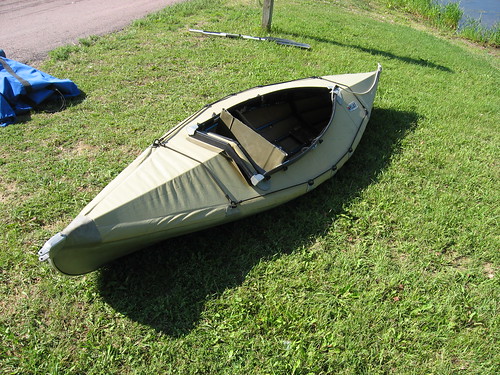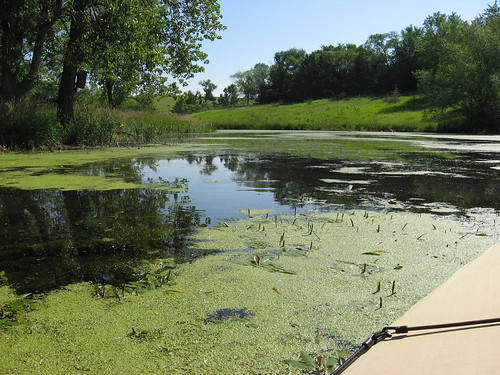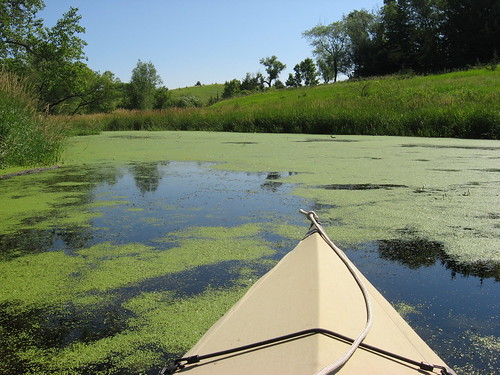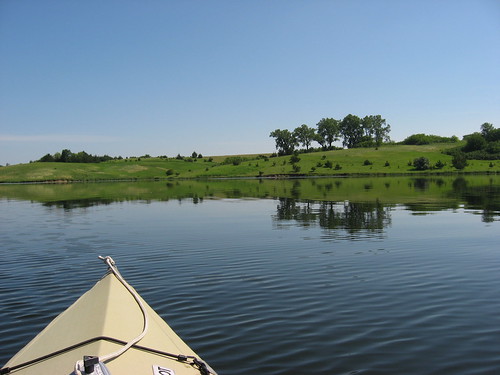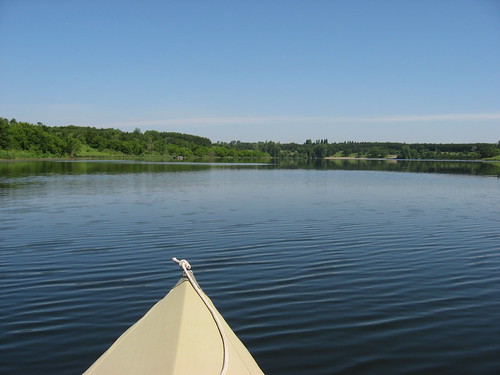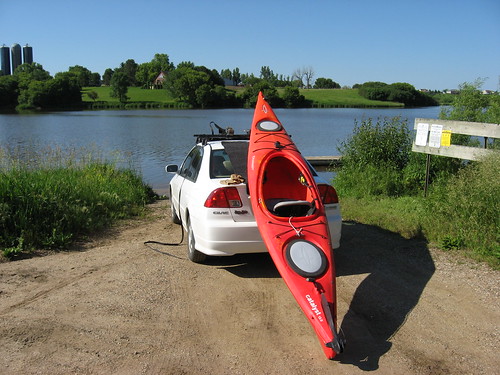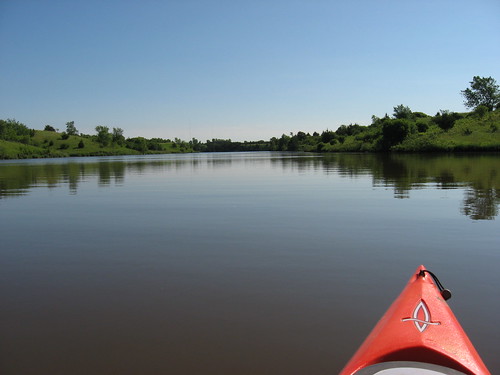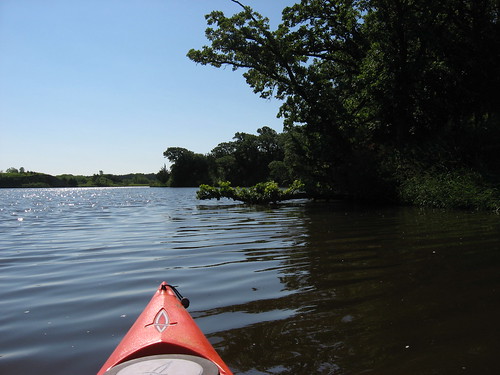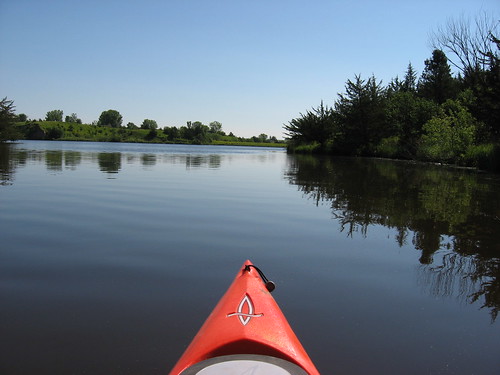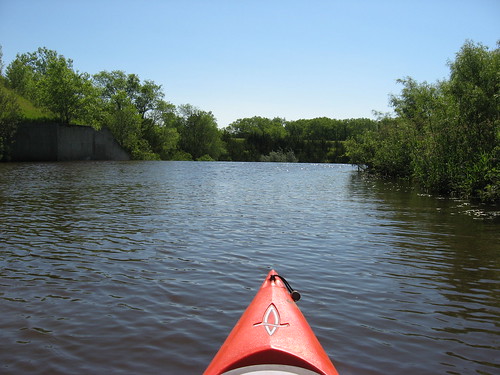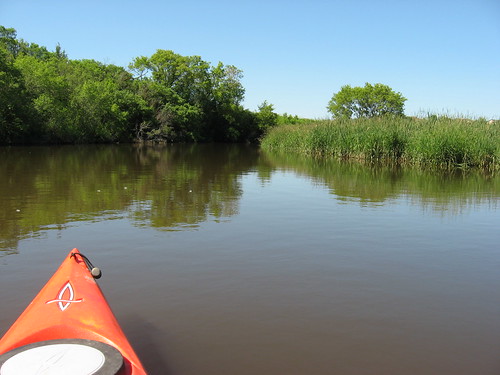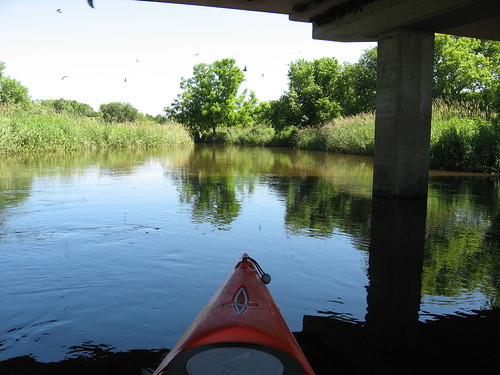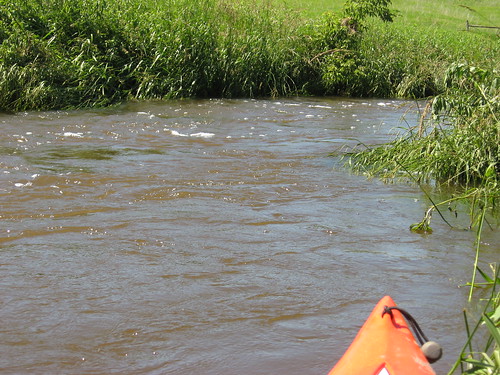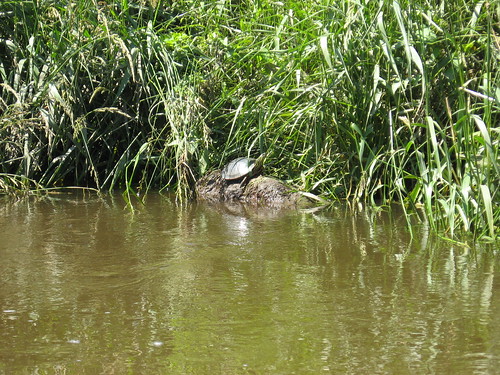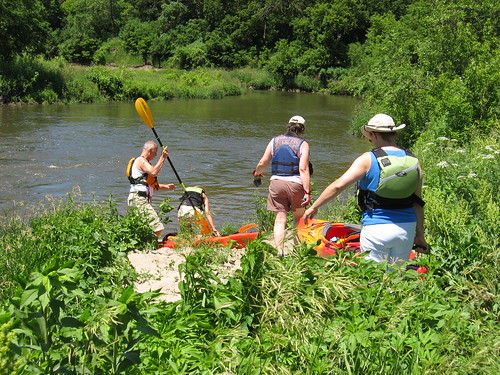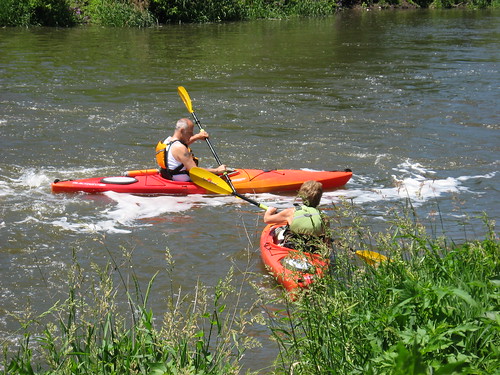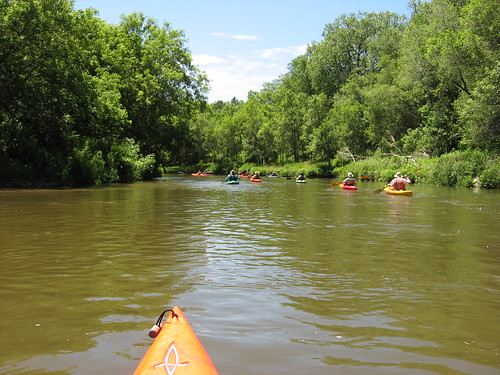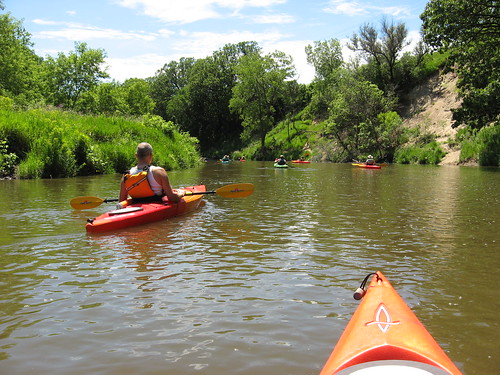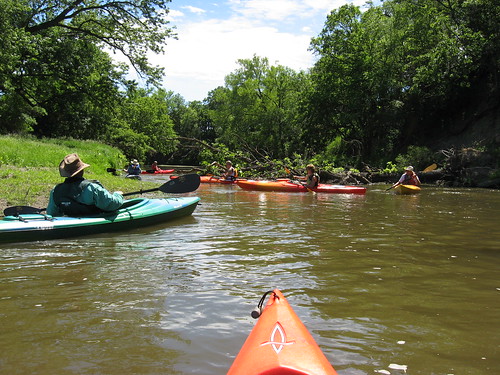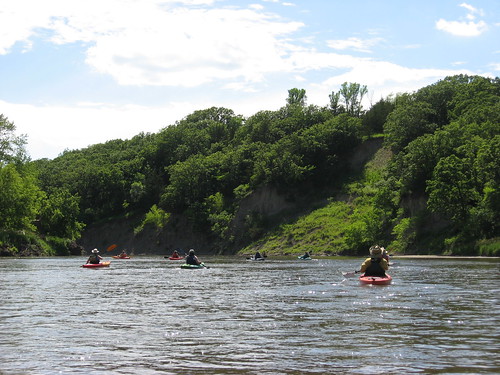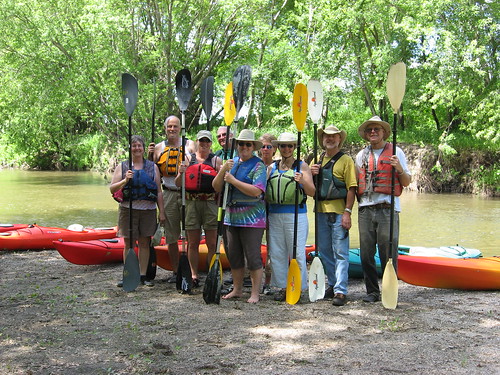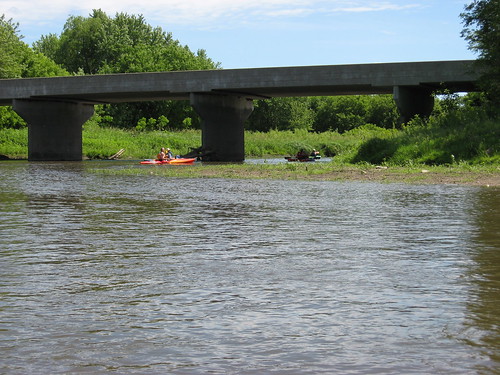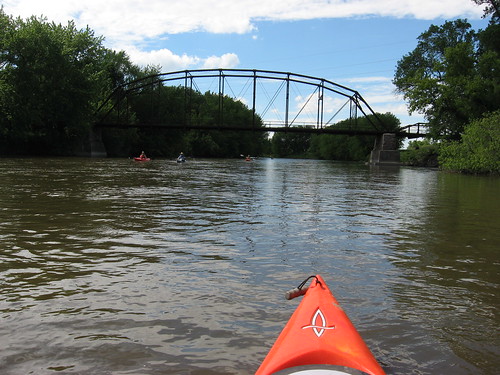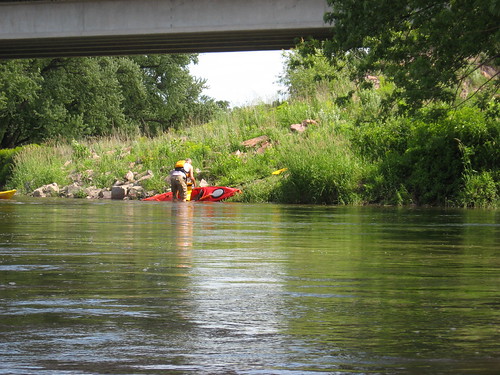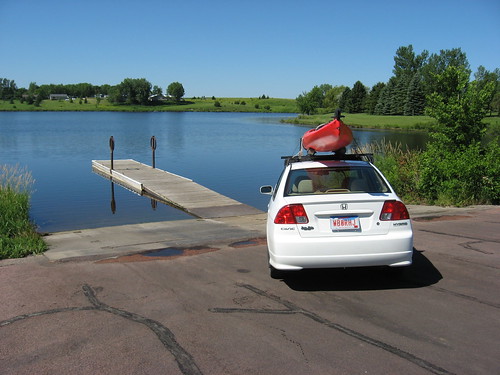
I last visited Lake Vermillion in early April, nearly three months ago. At that time the landscape was still cast in the brown shades of early spring and there was a bit of snow still on the north-facing banks. My cruise then was up into the western arm of the lake and into the feeder creeks draining the watershed of the area.
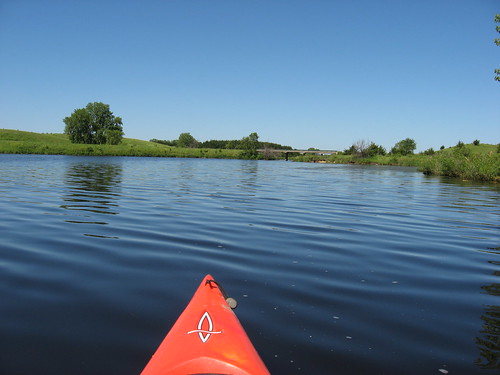
Today, I decided to check out the changes that have taken place over the past three months along the same route I traveled then. The Lake Vermillion Recreation Area is located west of Sioux Falls. One route there is to go west on Highway 42 out of Sioux Falls, a few miles past Highway 19 and then north. The direction is indicated by a sign along Highway 42, and the LVRA is five miles north. Another route is along Interstate 90, west out of Sioux Falls to the turn-off south about six miles west of Highway 19 and then south about five miles. Today, I traveled along the Interstate going out to LVRA and then came back on Highway 42.

There were a few trailers for fishing boats out on the lake, but since I was going along the western arm, I did not see anyone else. The western arm is the more peaceful route for a kayak because it is largely unused. I have never seen another boat on that section of the lake, and today was no exception.
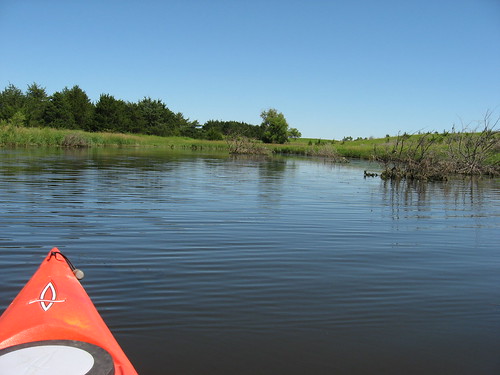
I suppose that motorboats are reluctant to use the western arm because of the grasses in the lake that may become caught up in the propeller. The water is deep in the main channel of this western arm, but there is also a good deal of aquatic grasses growing throughout, particularly along the shores and in the inlets flowing from the watershed. That might suggest difficulty for fishermen using outboard motors.
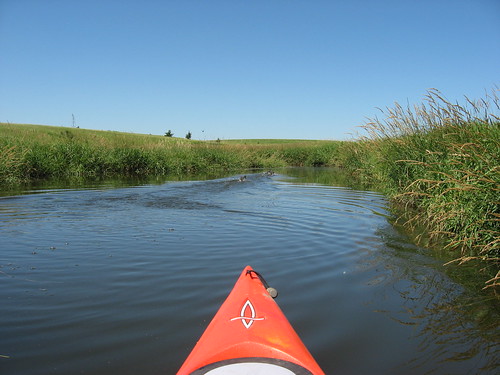
The main body of the lake is just a large body of water oriented north and south and does not offer much in the way of bays for exploration. The most interesting aspect of the main body of the lake is the Vermillion River at the northern end that feeds into the lake. The trouble, however, is that it takes about an hour to kayak up to that end. If the wind is in a contrary direction, it can be a long slog up or down the lake. Sticking to the western arm eliminates the long paddle north to the river and still offers the opportunity to poke around in the weeds.

There are a couple of inlets to this western arm, and I really like to go up these waterways until it becomes impossible to proceed further. The inlets are my favorite aspect of cruising on Lake Vermillion. The western arm extends from the LVRA docking area up into the mouths of a couple of creeks entering the main body of the lake. The mouth of these creeks lead into gradually narrowing waterways that extend nearly a mile into the watershed.
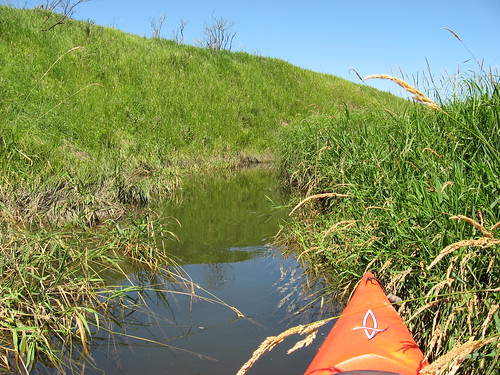
I like to enter these areas because they seem like seldom visited places – secret waterways within a unique ecological setting. There are two waterways that extend deep into the landscape, and they are both at the western end of the arm. The northwestern entry begins almost as a river and gradually narrows deep into the watershed to a width of about two feet. I like to go as far as possible in my kayak, right up to whatever blocks further passage. The water in these inlets, even in the narrowest portion, was no less than three feet, and often four or five feet deep.

A problem in going so far into the inlet is the difficulty of turning around. Today, as well as on my last trip to LVRA, I got deep into the weeds and could not turn the kayak around. An exit required a few hundred yards of moving backward down the channel.
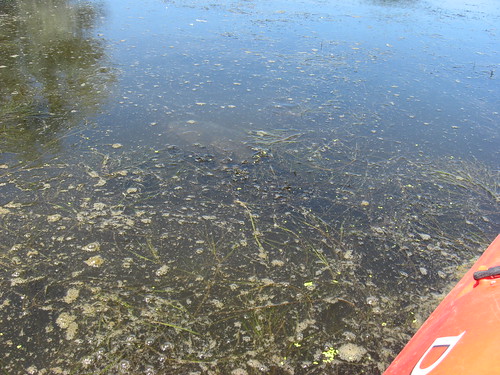
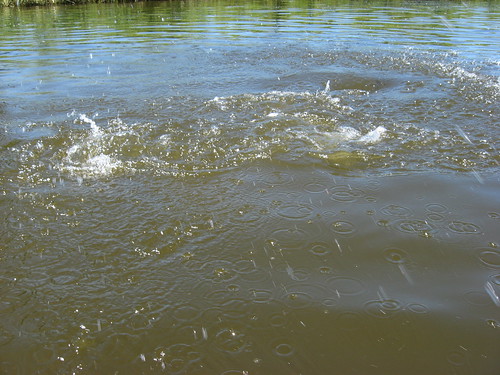
I saw some ducks today, a couple of beaver, a deer, and lots of jumping carp. The carp were very large, and they made quite an impact as they jumped up out of the water. I could see them resting or moving slowly just below the surface, sometimes alongside the kayak. Their jumping can be startling if unexpected. I was not bothered by bugs on this cruise: no mosquitoes, no gnats, no flies. My wife remarks about how unaffected I seem to be by mosquitoes, but I didn't even see any on the cruise today - even though I was deep in the marsh of the western arm.

Today, the landscape was green, in contrast to the drab brown of my last trip. I had enough time to enjoy the setting and felt privileged to be a guest in this secret area, this special part of the lake environment that is seldom seen by people. My cruise lasted about 90 minutes today.

Interested readers can check out other narratives and photos of the LVRA in earlier posts found in the menu along the right side of the blog.

